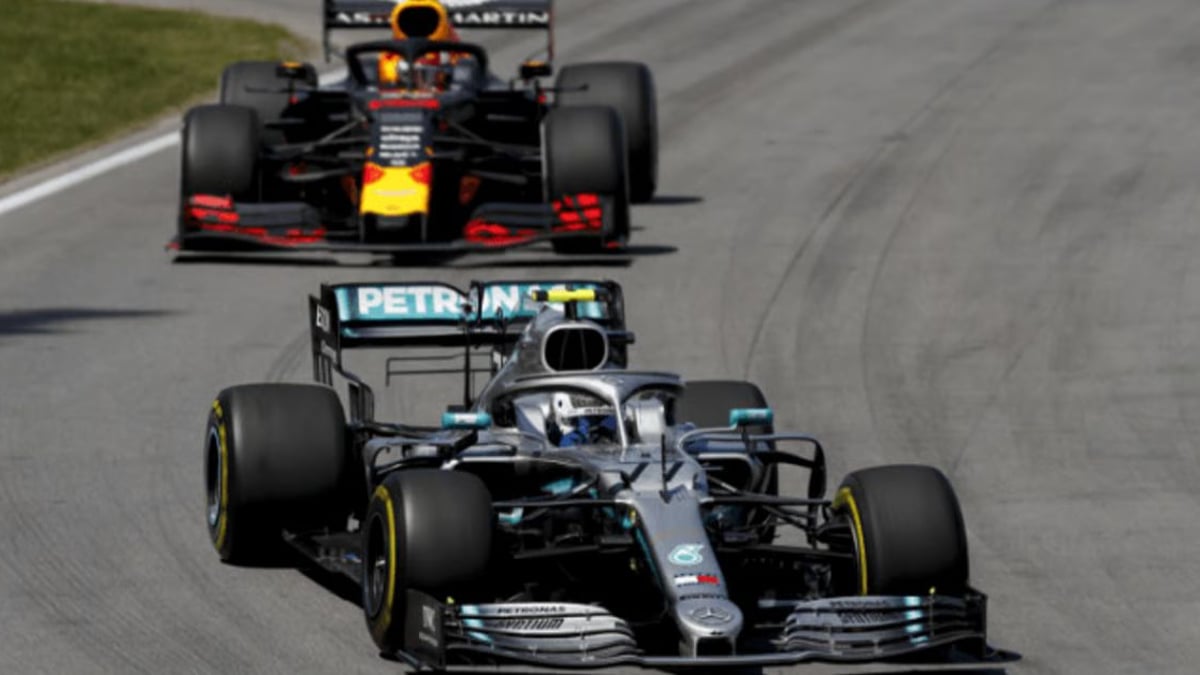Formula 1 Betting: Strategies, Tips, and Podium Finishes

This comprehensive guide to Formula 1 betting strategy draws on decades of expertise in the sports betting industry.
- #ad. 18+. Gamble Responsibly. Gambleaware.org. Must be 21+ to participate (18+ in KY). Gambling problem? Call 1-800-GAMBLER (CO, IL, IA, KY, KS, LA, MD, NC, NJ, OH, PA, TN, VA). Call 1-800-NEXT-STEP (AZ). Call 1-800-9-WITH-IT (IN). Deposit required. Paid in Bonus Bets. Bets wager excluded from returns. New Customer only. T&Cs, time limits and exclusions apply. Code is for marketing/tracking purposes.
How Does Formula 1 Work?
Formula 1 is the highest class of open-wheel auto racing in the world. Its championship season consists of a series of Grand Prix races, the results of which are combined to determine two types of champions: Drivers and Constructors.
An F1 Grand Prix is a full weekend affair: the first two practice sessions are on Friday, the final practice sessions or sprint races are on Saturday, and the primary race is on Sunday.
Every driver who finishes in the Top 10 of the main race is awarded points:
- First: 25 points
- Second: 18 points
- Third: 15 points
- Fourth: 12 points
- Fifth: 10 points
- Sixth: 8 points
- Seventh: 6 points
- Eighth: 4 points
- Ninth: 2 points
- Tenth: 1 point
Drivers who finish in the Top 10 can secure an additional point if they record the race's fastest lap.
Points are also awarded for Saturday sprint races:
- First: 8 points
- Second: 7 points
- Third: 6 points
- Fourth: 5 points
- Fifth: 4 points
- Sixth: 3 points
- Seventh: 2 points
- Eighth: 1 point
Understanding the Evolving Landscape of Formula 1 Betting
The introduction of new regulations at the start of the 2014 Formula 1 season, which included smaller engines and hybrid electric power complete with energy recovery systems, ended the Red Bull team's previous dominance.
This shift signaled Mercedes’ time at the top, and since then, the team has won every Drivers' Championship and every Constructor’s Championship, in addition to the vast majority of races. Specifically, Lewis Hamilton, driving for Mercedes, has won more than half of the races staged since 2014, while his teammates during this period, Nico Rosberg and Valtteri Bottas, have averaged around a 20% wins-to-drives ratio.
This dominance has left limited opportunities for their rivals, primarily the Ferrari and Red Bull teams, who have only managed to secure wins when Mercedes has faltered; no other team has won a race since the start of the 2014 campaign.
At the beginning of the 2019 season, excellent pre-season testing suggested these championships would be a match between the Ferrari and Mercedes teams. However, the German outfit quickly raced clear of their rivals, leading to massive odds-on shots for Mercedes before the season was a third of the way through its 21-race calendar.
Despite this clear dominance, Formula 1 betting sites offer more opportunities than ever. Mercedes' consistency has led to an increase in "without the favorite" markets. Furthermore, with Mercedes, Ferrari, and Red Bull consistently outperforming their rivals, markets featuring simply the other seven teams have also emerged.
Key Formula 1 Betting Markets
- Race Winner: This is the most straightforward market available for F1. Decide who you think will win the race outright.
- Podium Finish: This market involves selecting drivers to finish in one of the top three positions
- Points Finish (Top 10 Finish): A "points finish" is defined as a top-ten finish, because drivers only earn world championship points by finishing within the top ten positions.
- Fastest Lap: You can bet on which driver you think will set the quickest lap of a race.
- Head-to-Head: You may see these “matchups” bets pit teammates or drivers from separate teams against each other. You decide which of the two drivers will achieve a specific stat or milestone in the race.
- Futures: The outright winners for the Drivers’ and Constructors’ Championships are season-long bets, which you can place in advance of the final races of the year.
Types of F1 Circuits
Ultimately, there is no substitute for studying F1 stats; therefore, make sure you know each circuit just as well as the drivers.
Fast Tracks (Low Downforce Circuits)
These circuits feature long straights where high speeds gain lap time. Cars require less downforce to move quickly through the air, magnifying the gap between the best and worst cars.
Examples: Monza (at the Italian Grand Prix), Spa (at the Belgian Grand Prix), Bahrain International Circuit (at the Bahrain & Sakhir Grand Prixes)
Slow Tracks (High Downforce Circuits)
The time advantage is gained on these circuits by sure-fire tire grip while cornering. Cars require more downforce, created by their wings, to maintain grip and stability around corners. A car's wheelbase (the distance between front and back wheels) also plays a role in cornering speed.
Examples: Hungaroring (at the Hungarian Grand Prix), Circuit de Monaco (at the Monaco Grand Prix)
Effective Formula 1 Betting Strategies & Tips
Bet Early & Identify Value
On a race-by-race basis, trawling and comparing the betting markets to the stats is an excellent way to gain betting value and potentially nab a big-priced winner. Eagle-eyed punters and bettors who diligently do their homework will quickly spot trends that betting sites often miss.
This online betting strategy is most effective before the opening practice sessions on Fridays.
Understand the Value of Practice Sessions
Most people’s instincts lead them to the "race winner" market, and they mistakenly regard opening practice sessions as the absolute truth. In the 2018 season, the driver who set the fastest time in the opening practice session went on to win the race only five times.
In contrast, the driver who went fastest in the third and final practice session during the same year, much more reliably prevailed as the race winner; it is a significantly more reliable guide.
If you are looking for candidates for a top-six or even a top-10 finish, note all practice lap times, as a car from a team outside the "big three" often shows its pace from the first practice session.
Apply the ‘Horses for Courses’ Theory
The "horses for courses" theory works exceptionally well in Formula 1. No two Formula 1 race circuits are the same; they are all vastly different. Circuits vary significantly.
Driver form, closely related to confidence, is undeniably a significant factor in motorsports betting. However, the car's form on the specific type of circuit it is about to race on is equally, if not more, important.
Close examination of dominant teams or drivers often reveals that these successes have all come on a similar type of circuit. When the competition switches to a venue with different demands on the machinery, that run can abruptly end.
Odds compilers frequently miss these specific form pointers and tend to read too much into recent overall form.
Analyze Podium Finishes
To identify a podium finisher, especially at a big price, you must assess the driver’s car’s likeness to the circuit’s characteristics. The performance gap between the best and worst cars is magnified at circuits with long straights and sweeping bends.
Time Your Bets Well
Timing your Formula 1 bets is vital. Betting markets usually open on Monday afternoon before the race weekend. Betting odds will fluctuate dramatically between Tuesday and the completion of the first practice session on Friday.














